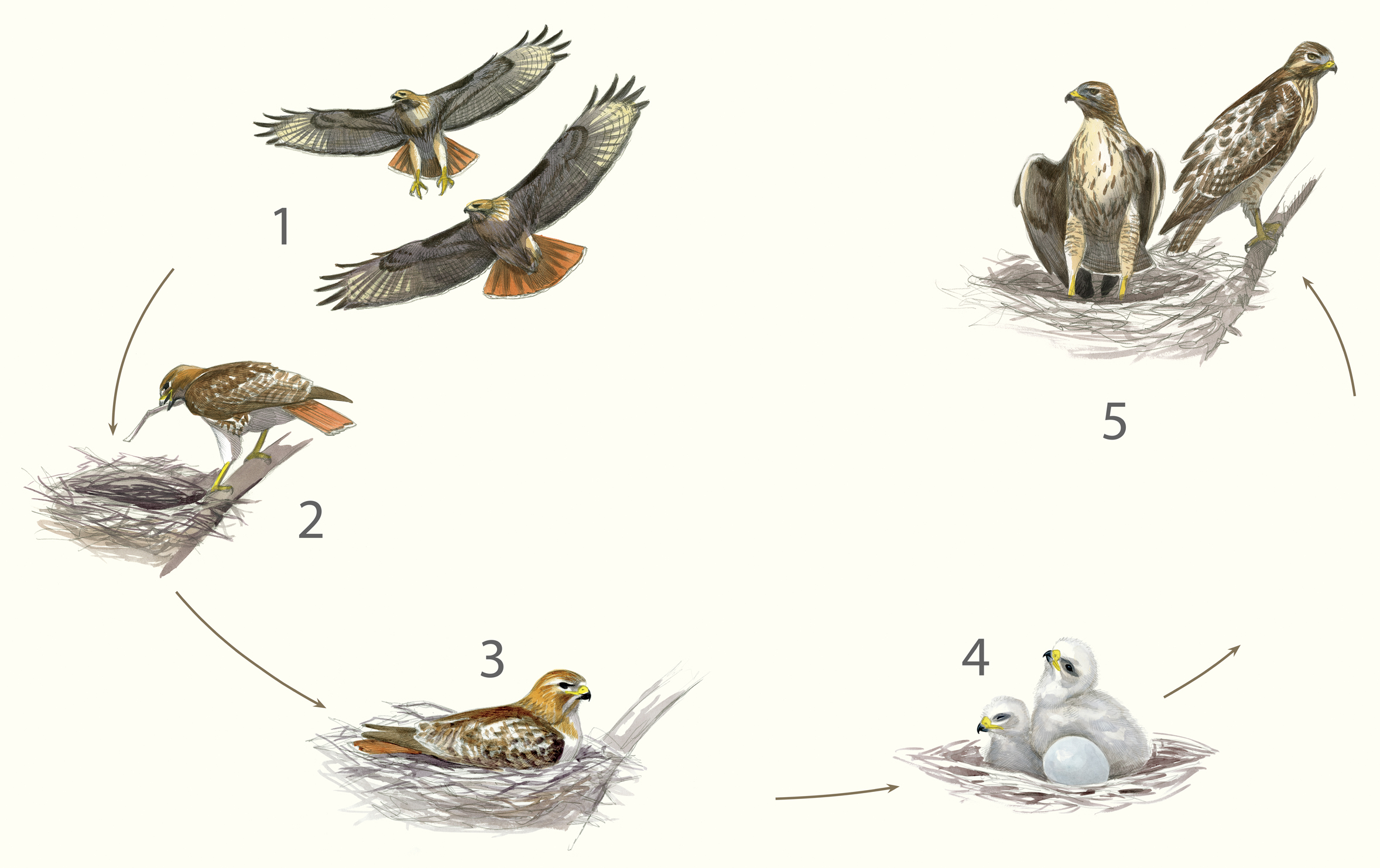The Nesting Cycle of the Red-tailed Hawk

1. In areas where Red-tailed Hawks don’t migrate, pairs remain together on territory all year. For migratory birds, courtship begins in the late winter or early spring, when they return to the nesting area. Courtship involves flight displays with legs dangling (shown here with the smaller male above).
2. Nest building begins sometime between January and April, depending on the local climate. Both birds visit past nest sites and potential new sites. They might renovate two or more existing nests and also build a new one before choosing which one to use. Both male and female gather materials, carrying sticks in their bill, but the female does most of the work shaping the final bowl. They work mainly in the morning, being stealthy to keep the location secret, and a nest can be completed in four to seven days.
3. Egg laying might not begin for three to five weeks after nest selection. Usually only two or three eggs are laid, sometimes four. Typically an egg is laid every other day, so the third egg would be laid four days after the first. Incubation begins as soon as the first egg is laid, and is performed mostly by the female. The male helps a bit with incubation, and brings food to the female on the nest. Incubation lasts from twenty-eight to thirty-five days.
4. The first egg laid hatches first, and later eggs hatch with one to two days between. Because of this asynchronous hatching, the young are at different developmental stages with a range of size and strength. If food is limited, the chicks compete for it in the nest, and the strongest nestlings (usually the oldest) will get more. The weakest will starve or be eaten by their siblings. This system may seem cruel, but feeding the strongest chick first ensures the best outcome for the most chicks—it is better to raise one healthy chick than two malnourished ones.
Nestlings are able to raise their heads within twelve to eighteen hours of hatching, sit up by day fifteen, feed themselves (from prey delivered by the parents) at day twenty-one, and leave the nest at day forty-six. The adult female continues to brood her young to keep them warm and dry until they are thirty to thirty-five days old, more when they are younger. During this time the male provides most of the food for the female and their young; he brings in up to fifteen prey items a day, totaling about a pound and a half of food each day for a family of three.
5. Red-tailed Hawks leave the nest (fledge) at forty-two to forty-six days after hatching, but they stay close to the nest and rely on the parents for almost all of their food for another two to three weeks. They gradually capture more of their own food over the following weeks, but continue to get some food from the parents for at least eight weeks after fledging. The chicks spend a lot of time during their last two weeks in the nest exercising their growing wings, and begin proper soaring flight about four weeks after fledging. In migratory populations adults and fledglings go their separate ways about ten weeks after fledging. In sedentary populations the family can continue associating for up to six months.